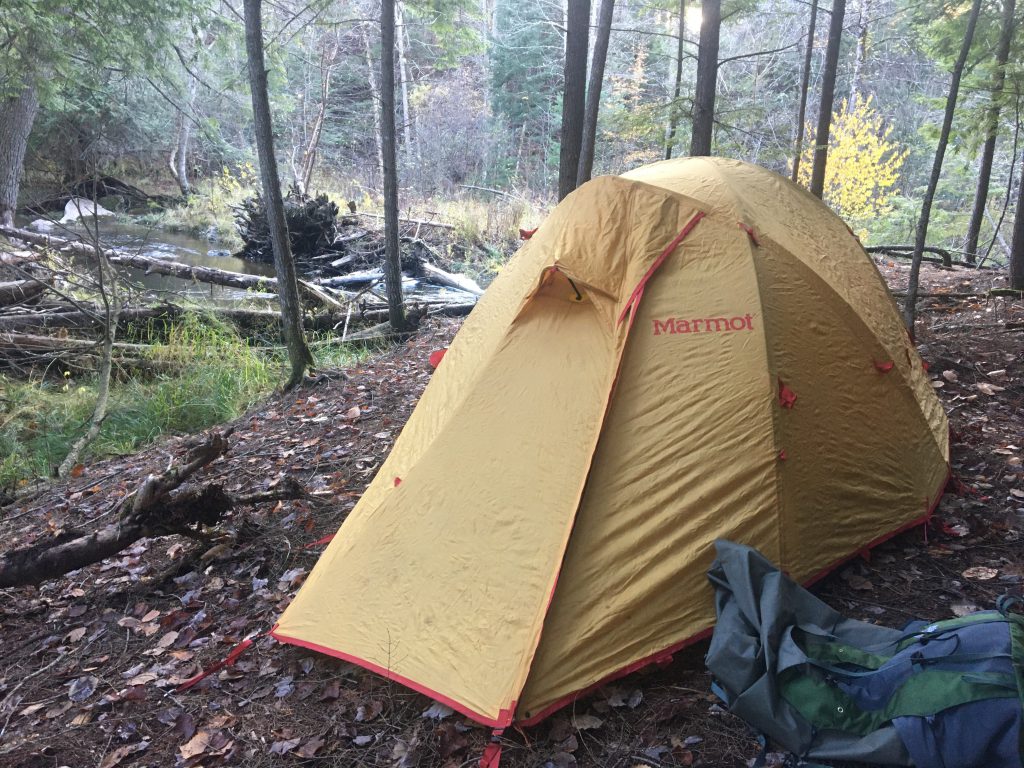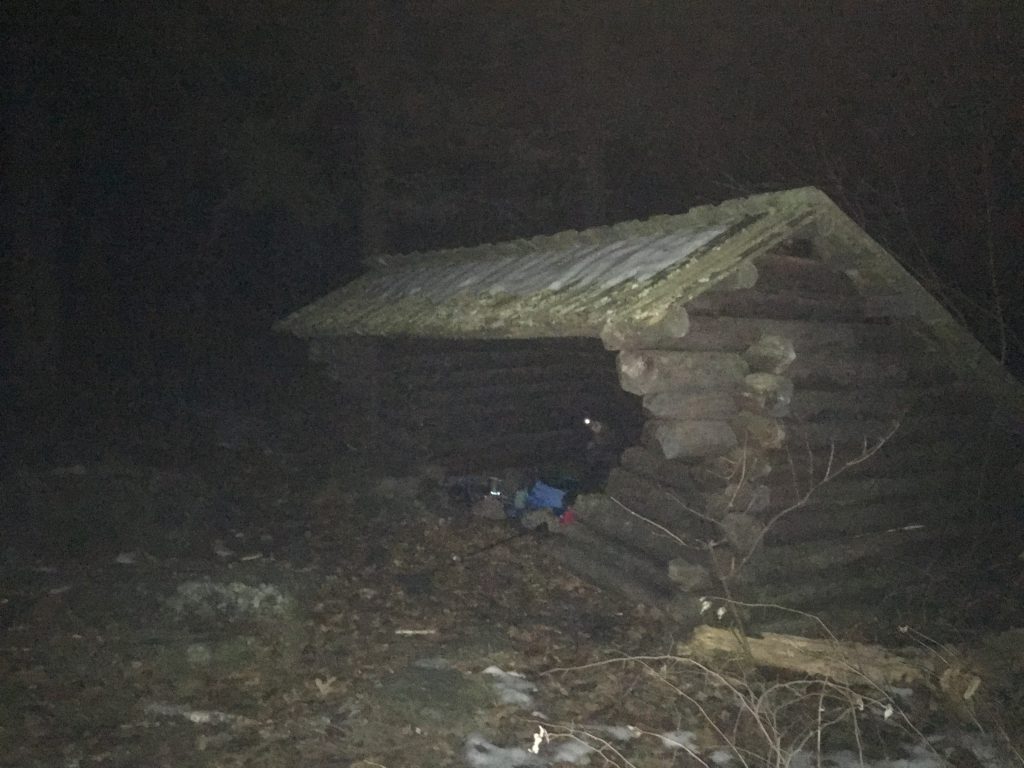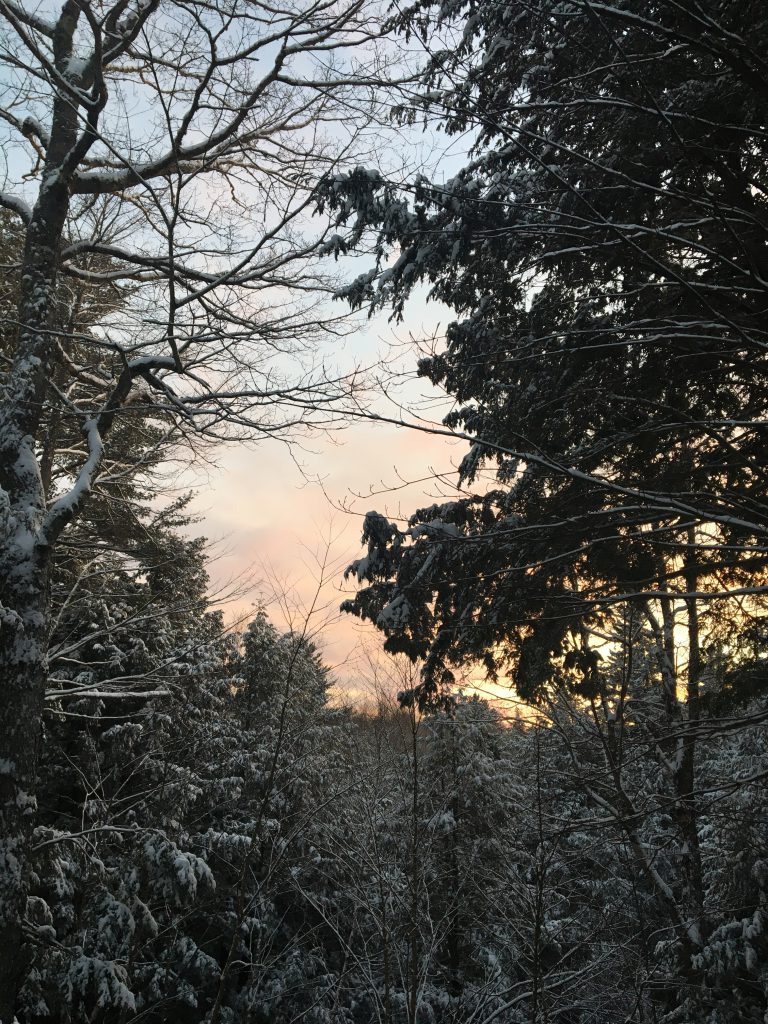And with snow accumulating to around an inch, it was suddenly winter in Maine.
I watched with envy this year as people concluded their Appalachian Trail thru-hikes, some as early as August, some as late as October. It strikes me just how quickly summer went this weekend. I had two major hikes over the summer myself – a long weekend trip out Gulf Hagas, and a long weekend trip to the Bigelows.
Both trips were along the Appalachian Trail.
I also field tested gear on our voluminous acreage. The lovely thing about our woodland home, which we have named Eitz Kar, is that we have plenty of wilderness right outside our back door. It’s also easier to camp with my pre-schooler if we don’t have to drive several hours only to turn around.
There are many good books about winter backpacking, but I’d like to highlight some important notes.
Winter Gear is Heavy

If you’re just getting into cold weather camping, the first thing to know is that it’s heavy. There’s not really a margin for ultralight here. And take this from me, a former Arctic Paratrooper, you don’t want to be calculating your base weight in the winter months, especially if you live in the Northeast or travel to the mountainous regions out west. That cuben fiber tarp you evangelize us about for your summer AT thru-hike doesn’t have a place in the winter.
It doesn’t mean you have to go overboard with super heavy stuff. There are tarp tents perfectly suitable for cold-weather season use.
I haven’t been able to empirically qualify this with stats yet, but I do wonder how many earnest AT thru-hikers come off the trail with a February or March start because the weather is too much for them. Given the number of folks who toss in the towel, I’d wager it’s a good bit. Even with bounce boxes and changing out sleeping bags, it’s hard to get out of the bag on a cold weather day and get moving.
Trust me, after years of field training exercises in proximity to or north of the Arctic Circle, I know.
Winter is a Mind-Killer
Last winter, Amelia and I scaled Bald Rock Mountain in Camden Hills State Park so we could take in a gorgeous, albeit freezing, Penobscot Bay sunrise.

It was not disappointing. We spent a chilly night in the Adirondack shelters atop the peak, and woke up to warm coffee and tea as we watched the sun crest the eastern horizon.
It was spectacular, but our feet and fingers were numb by the time we made it back to the car. We weren’t underprepared, but it is difficult to find the motivation to function in the morning hours.
In bear country, it may not be an option, but having your stove prepped so you can slightly pop out of your sleeping bag in the morning and get the water boiling is a good way to get started. This is better suited for the parts of the season where bears are hibernating. End of winter, early spring hikes when it is still cold, especially on the AT, may not be an appropriate time of year to do this, as the bears may be stirring.
How to Start a Hike
I wrestle with my daughter on this, too. After 25 years of road marching in the Army, I can tell you, always start the hike slightly chilled. You will heat up as you go along. My rule is that if my teeth are chattering at the start of the hike, I’m doing the right thing.
I’m not going to bore you with a redundant lecture about no cotton, synthetic wicking layers, or layering in general. If you’re a hiker that reads this sort of article, you’ve more than likely already digested four of those.
If there’s snow on the ground, or even if it’s cold enough that the ground will be hard, start at a slower pace than you would over the summer or spring. You’re going to burn calories at a faster rate, because you’re probably carrying more and heavier gear. Where you might want to do a higher mileage day in another season, this is the time to take it slower (exception being ski touring).
Bring More Fuel, More Food, More Water
…and don’t ever just eat snow. You expend more water melting it in your mouth than you do bringing it in.
As we mentioned, cold weather hiking is harder work. Consider a stove with fuel that is performant in cold weather. Consider that you may need to stop and replenish water by melting it, if sources are frozen over.
You need to take in more calories. Read the damn Nutrition Facts. Many popular hiking foods provide more sodium than they do carbohydrates. Don’t incur a cold weather injury because you don’t bring enough of the right kinds of food.
Little Tips I Wish I Learned Before I Sustained Frostbite
You can make a vapor barrier for your boots out of bread bags. This ghetto fabulous trip was one that I failed to internalize when my parents would do this for me growing up in Pennsylvania.
10 hour handwarmers are great, and relatively lightweight means to keep your fingers and toes from losing warmth. As much as I love winter, this has always been my struggle.
Army surplus climbing skins will work with almost every model of ski.
You don’t have to spend $40 on replacement MSR Snowshoe straps if you have parachute cord and an imagination.
A children’s sled can easily be converted into a halfway decent pulk for winter camping. I’ll be doing a video about this in Katahdin Woods and Waters this winter.
Winter Wonderland

I love winter camping more than summer camping. I love reading Jack London short stories, particularly “The White Silence”, by a fire in the Maine woods.
There’s a crushing sense of isolation and self-sufficiency with a tremendous amount of romance buried therein. When you tap into that, you discover so much about yourself and your own capabilities.
